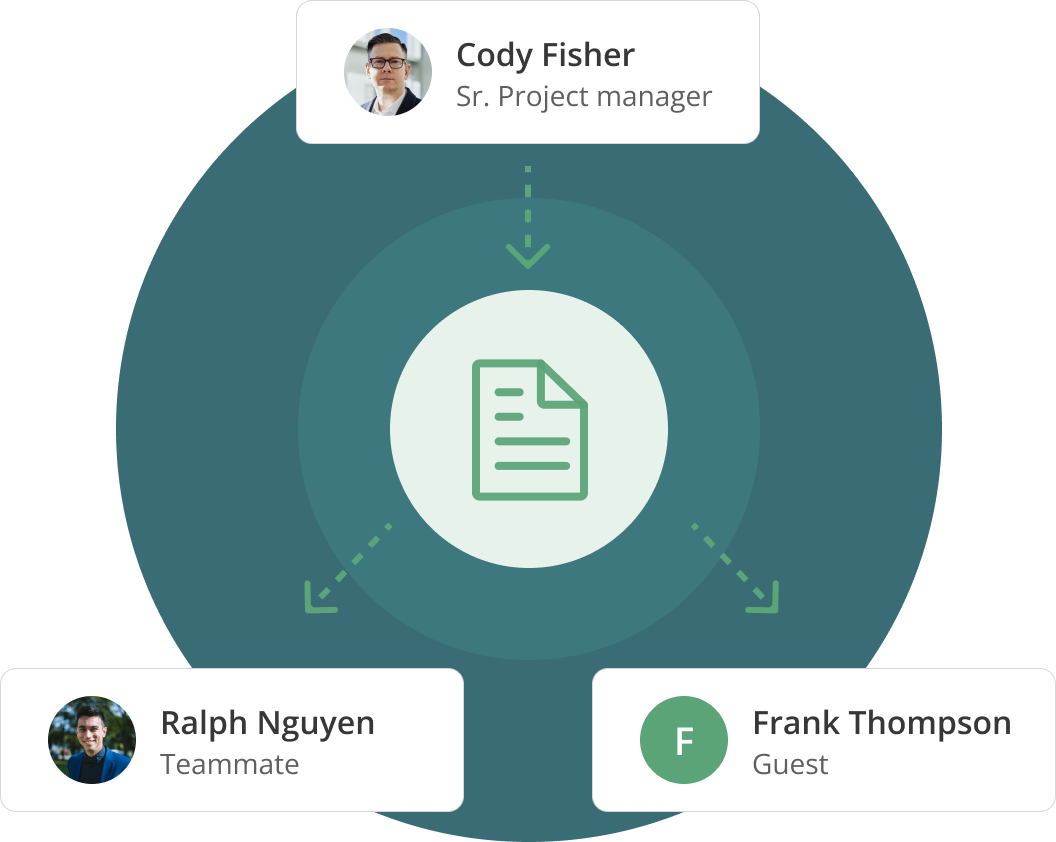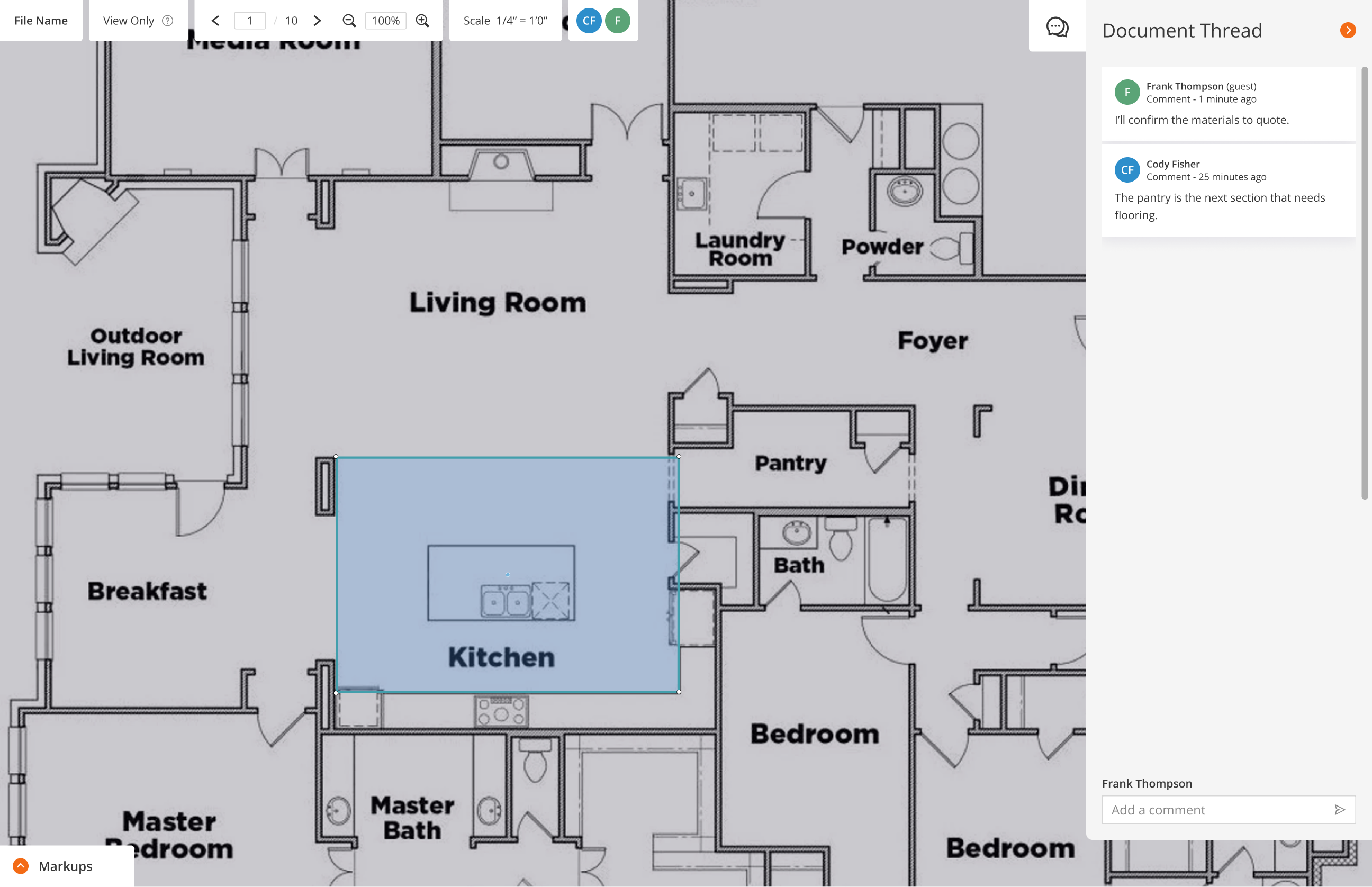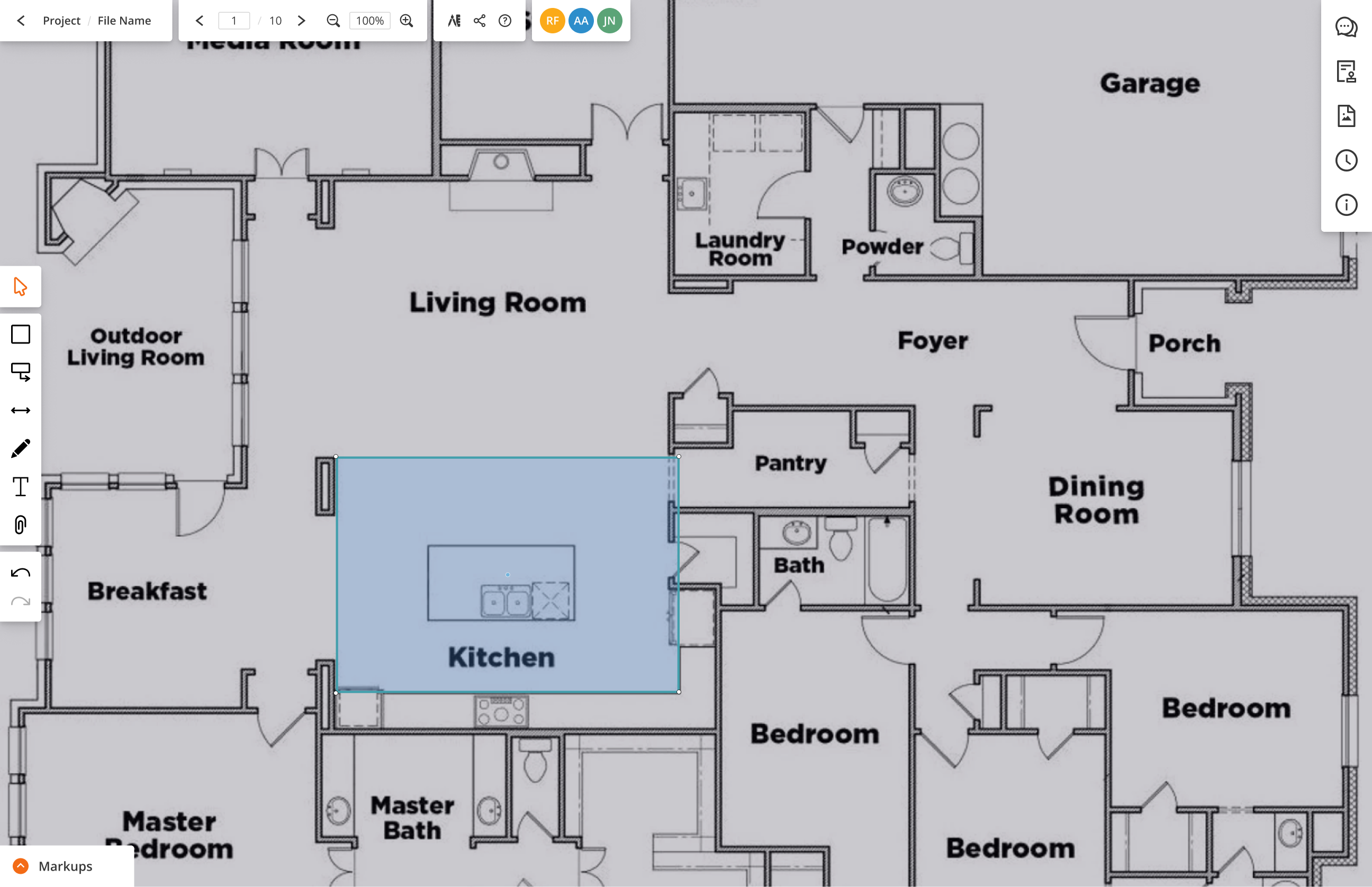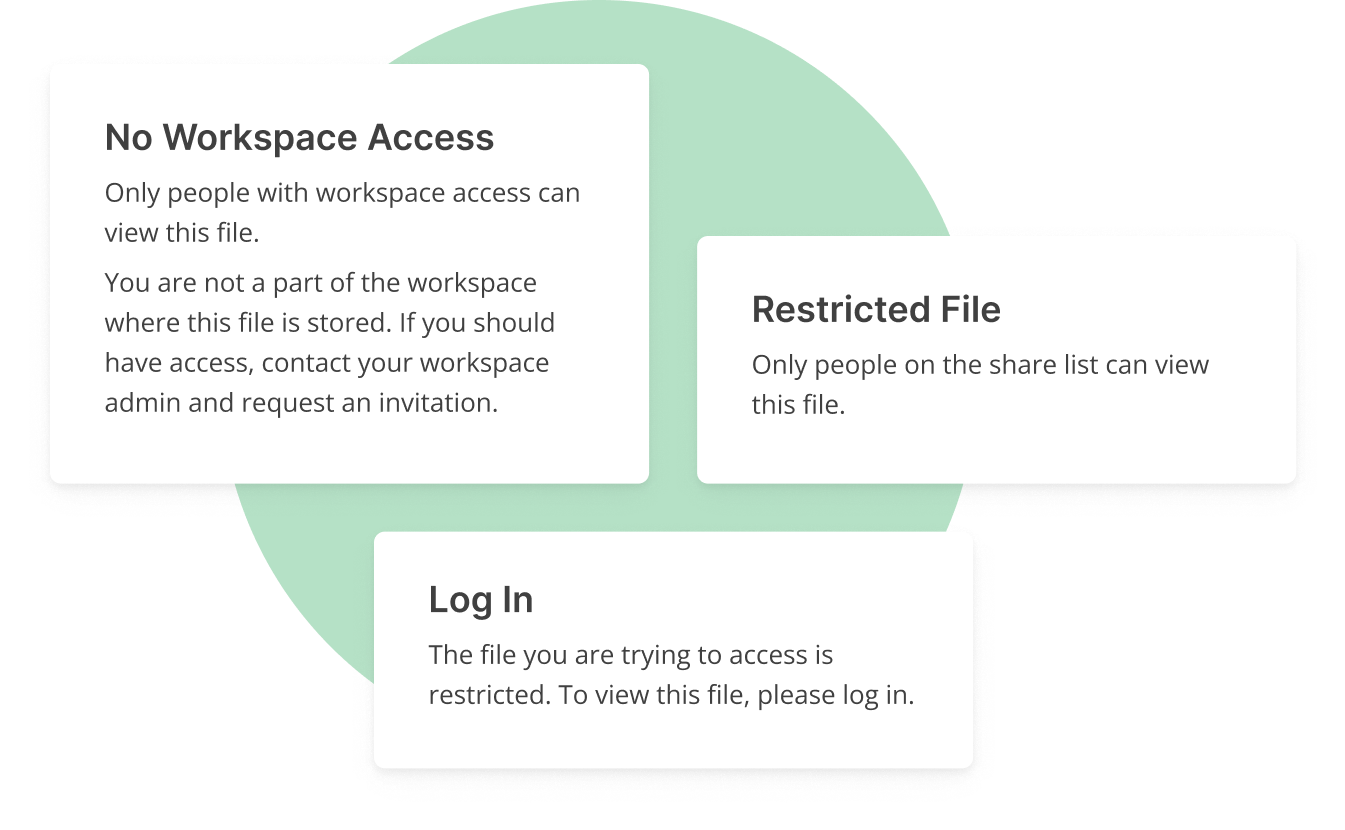February - May 2024

In construction, the general contractor manages the home project by contracting out different disciplines (electric, concrete, etc.) to complete portions of the home. They also manage the planning, cost estimating, and budgeting. This creates a complex web of collaborators who need access to specific files, not entire projects.
Gearing up for launch, I focused on building out core sharing functionalities for our product. I led the discovery and design of file sharing features that lets users collaborate more efficiently while maintaining project file security. Users can now collect feedback from project members or subcontractors through email invites or shareable links.

Encouraging collaboration within documents was a key initiative, yet our users were limited to sharing the entire project and all its files with those in their workspace. I based the file sharing requirements on user interviews insights, which helped me determine the sharing flexibility that general contractors needed to collaborate with their files.





When brainstorming ActiveDraft’s share functionality, I identified two key use cases for sharing files with outside collaborators:


Introducing file sharing links raised the question: how do we protect confidential material? I proposed granular access levels so users could choose the level of security, from public access to locked files.

After presenting varying options to the team, I iterated based on their feedback:
Simplified to 3 permission options aligned with file, project, and workspace structure. I needed user validation before adding extra security layers.
Added user management within files so users could have different editing and access permissions at the file level versus project-wide access.

We defined guests as non-workspace users who received a share link with the file permission option: Anyone with link. The role was created for short-term collaborators, who played a small part in the larger project but needed quick and limited file access.
New guest touch points within ActiveDraft:
Alternate guest document experience: I designed the view to focus on file viewing and commenting, but removed the markup tools reserved for workspace seats.
Guest commenting: I crafted commenting flows that allowed guests to supply their names to identify themselves within the project.


Now that users could set file permissions, it was essential to inform users whether the file was restricted to the workspace or share list users. The team and I determined that the message they received depended on the users’ logged-in status.

I ran two remote unmoderated tests with 8 total participants (4 per test) using task-based scenarios. Users were encouraged to think aloud, with follow-up questions after each task to gauge their perceptions.


80% of users successfully found the share link
I uncovered a critical bug where the share icon didn’t appear on first file access
The share icon’s position in the document was hard to discover (when it did appear)
Users had varying interpretations of whether link permissions allowed editing or viewing only
Users can share individual files, moving beyond project-wide access limitations
Introduced a guest role that supports short-term collaboration
Created a flexible permission system that balances security with ease of use
Reduced friction for external collaborators who previously couldn’t access files
This project taught me how to design a core feature that touches multiple product areas while maintaining flexibility for future expansion. By documenting each design decision and edge case, I equipped our team with clear guidelines for ongoing development.